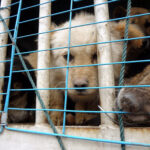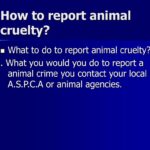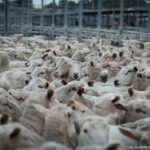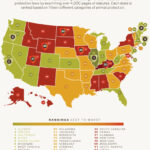In an exploration of the intricacies of human behavior, the disturbing nexus between animal cruelty and domestic violence emerges as a notable concern. Both phenomena dwell in the shadows of society, often ignored or underestimated. This article delves into the overlapping nature of these two forms of abuse, unraveling their connections and the implications they bear for victims, both human and animal.
At its core, animal cruelty encompasses a broad spectrum of behaviors ranging from neglect to overt acts of violence. This reprehensible conduct often manifests in domestic settings, where individuals may harm pets or other animals as a means of exerting power and control. This dynamic parallels the mechanisms of domestic violence, where abusers inflict harm upon their partners, children, and indeed, pets. The unfortunate reality is that these acts do not exist in silos; they are deeply interlinked, often serving as precursors or additional layers to the cycle of violence that characterizes abusive households.
Research indicates a significant overlap between these two forms of abuse. Victims of domestic violence frequently witness or experience harm directed toward family pets. This distressing reality can complicate the decision-making process for victims trying to escape abusive relationships. Many individuals hesitate to leave for fear of what may happen to their beloved animals in their absence. This emotional stranglehold underscores the need for a broader understanding of the dynamics at play.
The intertwining of animal cruelty and domestic violence is not merely anecdotal. Studies reveal that a substantial percentage of women in shelters report that their partners have threatened or harmed their pets. Such actions are not arbitrary; they serve as chilling reminders of the abuser’s power and can be used to manipulate and control victims. The tethering of an abuser’s violence to their partner’s animal intensifies the trauma experienced by victims, complicating their emotional landscape.
Furthermore, the societal perceptions surrounding animal abuse can often obscure its severity. Unlike human victims, animals are voiceless, dependent on their owners for care and protection. This dependence can embolden abusers, who leverage their power to inflict harm without fear of immediate repercussion. Even in cases where the abuse is reported, animals frequently fall through the cracks of legal protection, often regarded as property rather than sentient beings deserving of compassion and care.
Domestic violence can manifest in various forms, each with unique characteristics but often drawing parallels to animal abuse. Physical abuse, psychological manipulation, financial control, and sexual violence all coexist within the framework of domestic violence. Similarly, animal cruelty encompasses a range of actions, from physical violence such as beating or poisoning to neglectful behaviors like withholding food, water, or medical care.
The repercussions of both domestic violence and animal cruelty are profound. They perpetuate cycles of trauma, not only impacting direct victims but also affecting witnesses—especially children. Observing acts of brutality against animals can normalize violence in young minds, contributing to the perpetuation of abusive behaviors in future relationships. The implications of such experiences extend far beyond childhood, potentially influencing interpersonal dynamics across a lifespan.
It is essential to recognize that the legal frameworks surrounding these issues often lack the integration necessary for effective intervention. While laws exist to protect both animals and victims of domestic violence, the disconnect between the two domains can hinder cases where animal abuse serves as a precursor or component of family violence. Enforcing protective measures for both humans and animals requires a multidisciplinary approach, with collaboration among social services, law enforcement, and animal welfare organizations becoming imperative.
The call for change extends to education and community awareness. It is vital to cultivate an understanding of the indicators of both domestic violence and animal cruelty. Communities must be equipped to recognize the signs and respond appropriately. Educational programs can play a crucial role in dismantling the stigma associated with reporting such abuses. Through community involvement and advocacy, it is possible to shift societal perceptions regarding the interconnectedness of these types of violence.
As we draw attention to the pernicious links between animal cruelty and domestic violence, we must also advocate for humane solutions. Providing resources for victims—both human and animal—creates pathways to safety and healing. Shelters that permit pets and outreach programs that include animal welfare can provide a holistic approach to intervention. By addressing the multifaceted nature of abuse, we can empower victims to reclaim their agency, prioritizing their wellbeing and that of their beloved animals.
The overlap between animal cruelty and domestic violence is both a reflection of societal failures and an opportunity for collective action. By recognizing the connections and advocating for victims, we forge a path toward a more compassionate society. It is our moral obligation to confront these issues, ensuring that every living being receives the protection and respect they deserve. The fight against all forms of violence must be steadfast and unwavering, for only together can we hope to build a future devoid of cruelty.








